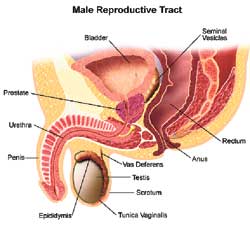
Prostate problems? Forget the scalpel, turn to laserProblems related to urination are quite common in men over 50. The commonest reason for this is enlargement of the prostate gland. Although there are medications to effectively manage the condition, there comes a time, where surgery is inevitable, at least for a few. In fact, prostatectomy, or surgical removal of the prostate gland is the commonest planned operation performed on men over 50 years or so. With the advancement of science and technology, Laser treatment for problems related to harmless enlargement of the prostate gland has come to the forefront. It is now available in Sri Lanka in a few centres. This week MediScene spoke to Dr. Srinath Chandrasekara, and Dr. Suren de Silva, two consultant genitourinary surgeons, who currently perform the procedure in the country.
Prostatic problems are a common reason for men over 50 years to seek medical advice. Commonly, they present with difficulty to initiate passing urine, which is called hesitancy. With time they can develop a poor urinary stream, and at a point they will feel that they cannot empty the bladder completely, needing to pass urine more frequently. Then, it will also be that they need to strain to empty the bladder, despite which the stream is poor, or dribbling occurs. All these symptoms are called lower urinary tract symptoms. The prostate gland is located at the base of the urinary bladder, and surrounds the urinary passage known as urethra. When the gland enlarges with time it impinges on the urethra, causing difficulty in passing urine. Although benign or non-cancerous prostate enlargement is the commonest cause for this presentation, it is not the only one. Changes in the bladder outlet and other reasons too can cause this type of symptoms. Although infrequent, prostatic cancer too can cause similar symptoms. Prostatic cancer can be ruled out by careful examination by the doctor along with relevant investigations. Cancer in the prostate gland is less common when compared to harmless enlargement, but it can stay dormant for a long time, before patients present with symptoms. For some people, age related enlargement of prostate can go unnoticed without causing any problems. But in a significant number, enlargement of the prostate gland can lead to complications, like changes in the bladder wall leading to frequency of passage of urine, and the need to wake up in the middle of the night to void. If the bladder is not emptied completely, collection of residual urine can predispose to urinary tract infection and formation of bladder stones. At times, patients can also present with sudden inability to empty the bladder, with painful urinary retention, needing catheterization. For a minority of patients, the development of complications can go to the extent of development of pressure within the bladder which is transmitted to the kidneys, ultimately causing kidney impairment. Lower urinary tract symptoms thus need medical attention, but a great proportion can be managed with the effective medication available today. Surgery is not needed for each and every patient. There are medications to ease the flow of urine and to shrink the gland. In most cases combinational therapy is used. But, when a patient develops complications, or symptoms do not respond to medication, he will eventually need surgery. The standard procedure is called transurethral resection of prostate or 'TURP' , where a telescope is sent via the urinary passage and the gland is cored out. TURP is a good and widely practised surgical technique that has been available for a long time, having few drawbacks. But it can cause bleeding, and in a minority of patients, blood loss can be significant. It is also not appropriate for patients with other co-morbidities, like cardiovascular diseases. Laser prostatectomy, the new technique for prostate treatment was introduced to the country two years ago at a private hospital in Colombo, just about two years after the UK started the procedure. MediScene learns that Sri Lanka was the pioneer in Asia to adopt the new technique, ahead of Singapore and Japan. Over 100 patients have undergone the operation up to now, in our country. Laser prostatectomy has its advantages because, bleeding is hardly ever heard of with this technique. Also, aged patients who have other medical problems and are not suitable for TURP, can be treated with laser treatment. Moreover, large glands which can cause problems when TURP is applied can be resected by the laser technique. For these special reasons Laser is preferable to the conventional TURP. The other significant advantage is the short recovery time and the fact that the patients do not need to be catheterized for days like in TURP. Thus the hospital stay is greatly reduced. In developed countries, this is done as a day procedure. The new ray of hope is that this is an option for medically compromised patients otherwise needing lifelong catheterization. However for those who have a choice between TURP and Laser prostatectomy, it is not a question of good operation versus a bad one, but a good option versus a better one. |
|| Front
Page | News | Editorial | Columns | Sports | Plus | Financial
Times | International | Mirror | TV
Times | Funday
Times | Medi Scene || |
| |
Reproduction of articles permitted when used without any alterations to contents and the source. |
© Copyright
2007 | Wijeya
Newspapers Ltd.Colombo. Sri Lanka. All Rights Reserved. |
